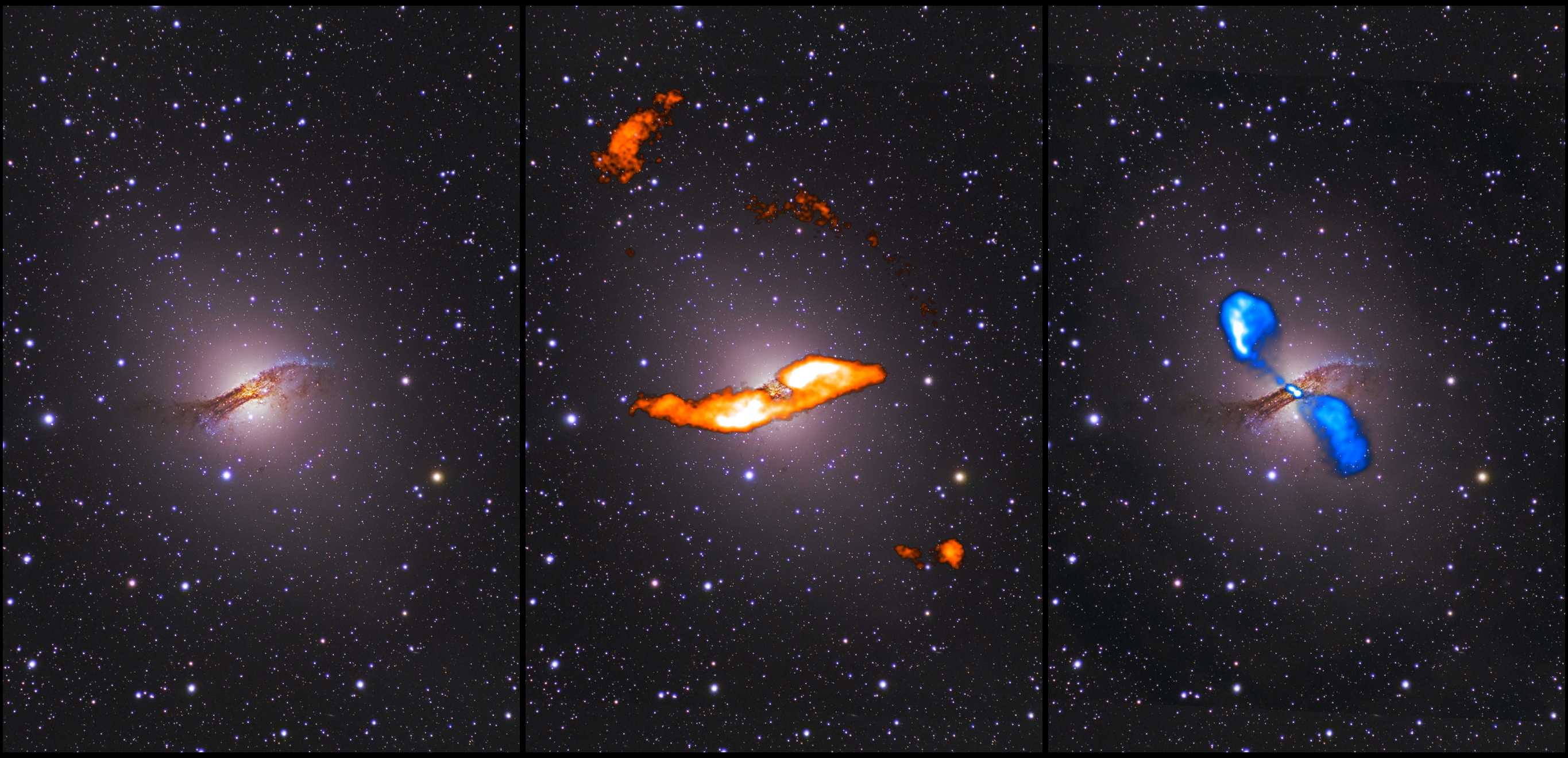Daily Image
02-04-2010Unveiling the secrets of Centaurus A
| Submitter: | Christian Struve, Tom Oosterloo, Raffaella Morganti |
| Description: | More than sixty years ago, the largest extragalactic radio source on the sky was discovered - Centaurus A - and has received great interest ever since. The galaxy associated with Centaurus A has been called a "freak" (Walter Baade) and referred to as a "pathological specimen" (Harlow Shapley) because the nature of its peculiarity was a complete puzzle. Today we understand the origin and nature of the radio source a bit better, but astronomers still "freak out" when they perform new observations, as Centaurus A still has secrets to be shared. The above figure shows the optical host (left panel; credit Robert Gendler & Stephane Guisard), called NGC 5128, with the famous dust lane, and the panel to the right overlays (in blue) the innermost radio lobes that get fueled with relativistic plasma by the active black hole in the centre. Observations of the neutral hydrogen gas (HI) with the Australian Telescope Compact Array have now allowed, for the first time, to study in detail the atomic gas in the disk of Centaurus A (middle panel shows the HI emission in orange). The HI in the disk extends 15 kpc (almost 50 000 light years) in diameter and shows regular rotation out to r=6 kpc. At larger radii the gas is not completely settled and forms an arm/tail-like structure. These results could be achieved by modelling the heavily warped HI disk with tilted-rings. The model also explains the famous Spitzer data showing the dust in the disk and fits with a stellar ring structure recently discovered. However, Centaurus A would not be so fascinating for astronomers if it would not leave us with another puzzle. The active black hole needs to accrete lots of material in order to power its lobes, but the absence of large-scale anomalies in the kinematics raises the question of how it does that (see also Daily Image from 06.08.2008, http://www.astron.nl/dailyimage/main.php?date=20080806). So far astronomers have a few ideas but more work (and observations!) clearly needs to be done to unveil yet another secret of Centaurus A. The above results are summarized in a paper that is accepted for publication in Astronomy & Astrophysics entitled: "Centaurus A: morphology and kinematics of the atomic hydrogen" by Struve, C.; Oosterloo, T.A.; Morganti, R.; Saripalli, L. A preprint of the paper can be found here: http://arxiv.org/abs/1003.3250 |
| Copyright: | Astron |
| Tweet |  |
